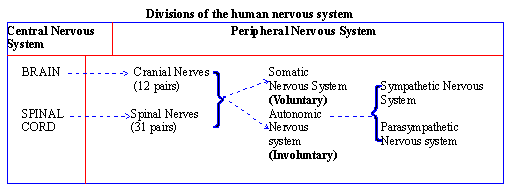|
PinkMonkey Online Study Guide-Biology
CHAPTER 23 : NERVOUS CO-ORDINATION
23.0 Introduction
The behavior of an animal in its environment to maintain
itself depends on the coordination of its organs systems. Without coordination
of various organ systems, various physiological processes would work in
a haphazard way, without linking together activities. The linking together
in time and space of various activities of an animal is called coordination.
Coordination is brought about by the nervous system and sense organs,
and by means of chemical substances (hormones) secreted by the endocrine
glands.
During the course of evolution, nervous systems have
become more complex. This is largely because animals have become larger
and more mobile, requiring more neurons than a sedentary animal. The most
fundamental function of a nervous system is (1) to receive a stimulus
(2) transmission of a stimulus to a central "brain", (3) interpretation
and analysis of the stimulus and (4) proper response by an effector.

Click here for enlargement
With the evolution of a complex nervous system
and bilateral symmetry, cephalization (formation of a head)
has taken place, and the ganglia in the head became large enough
to be called a brain, which is the main nervous control center of
the body.
The Human Nervous System : The human nervous
system is divided into two interrelated parts:
(1) The central nervous system (brain and
spinal cord).
(2) The peripheral nervous system (nerves
and ganglia).
Divisions of the human nervous system

Click here for enlargement
[next page]
|